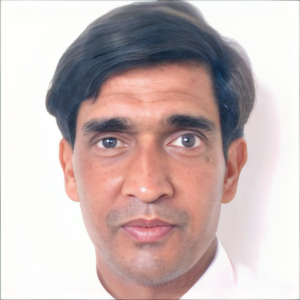Title : Implications of metal complexes in biology and medicine
Abstract:
The importance of metal ions to essential functions of living systems and for the wellbeing of living organisms is well known. Metal ions are fundamental elements for the maintenance of the life spans of the human, animals and plants. The stability constants of Cd2+, Fe2+ and Zn2+ complexes with hydroxyproline were determined by Paper Electrophoretic Technique (PET). This method is based on the movement of a spot of metal ion in an electric field at various pH of background electrolyte. A graph of pH against mobility gives information about the formation of binary complexes and permit to calculate their stability constants. The stability constant of the ML (first) and ML2 (second) complexes of Cadmium (II) – hydroxyproline, iron (II) – hydroxyproline and zinc (II) – hydroxyproline, have been found to be (4.41 ± 0.01; 2.95 ± 0.06), (4.41 ± 0.01; 281 ± 0.11) and (4.83 ± 0.02; 3.28 ± 0.07) (logarithm stability constant values), respectively at ionic strength 0.1 mole L-1 (per chloric acid as background electrolyte) and a temperature of 35? C. the first and second stability constants of metal complexes follow the order Zn (II) > Cd (II) > Fe (II). Metal complexes can offer their action such as anti-inflammatory, antimicrobial, antibiotic, anti-thyroid and anticancer compounds. Metal based drugs bioactivity can be increased by metal chelation, which in turn increase their absorbance and stability. Recent advances in inorganic chemistry have made possible formation of number of transition metal complexes with organic ligands of interest which can be use as therapeutic agents
Audience Take Away:
- Audience can initiate to study in the same research area.
- Audience can expand their research work of similar interest.
- Audience can also prepare metal complexes of their interest and study their therapeutic applications.
- Audience can teach their students the applications of simple paper electrophoretic technique in the determination of stability constants of complexes.
- Audience also teach applications of stability constants in biological systems and medicine.
- The knowledge gained can be used to enhance their teaching and research.
- Yes, any Faculty member can use this technique in their teaching and research.Stability constants of metal complexes of interest can be determined.
- Therapeutic applications of synthesized metal complexes can be attempt.
- By maintaining moisture of electrophoretic chamber constant.
- By using glass plate below the paper strips
- Leaving the moisture paper strips by back ground electrolyte for long time (over 30 minutes) before running current for one hour.
- Yes, Accuracy of results can be improved.
- In term of uncertaintyin the results ± 5 % results are reliable.
- Accuracy of results can be increase by improving the technique as mentioned in above item.
- Simple Paper Electrophoretic Technique is useful in determining that metal complexes are formed or not if formed its stability constants can also be determined.
- Technique is useful in chelation therapy
- Metal complexes can be prepared on a long scale and at a particular condition and study for their therapeutic applications.




